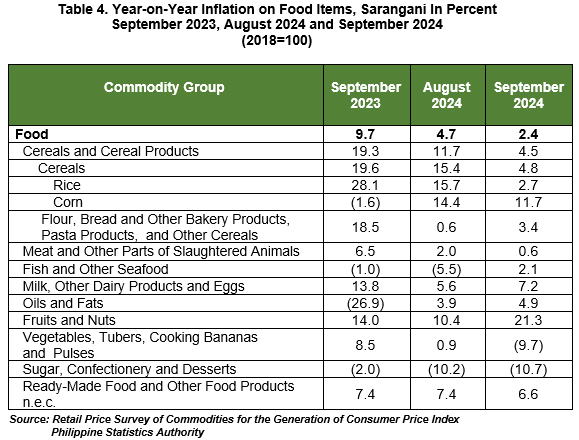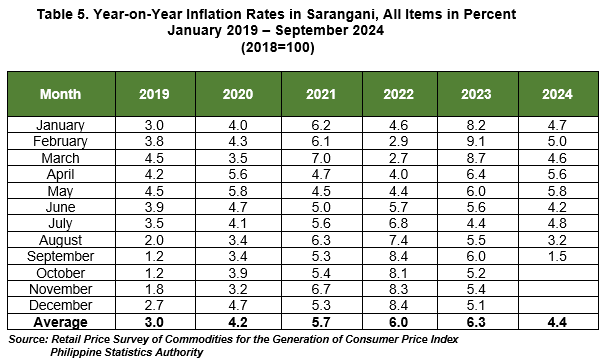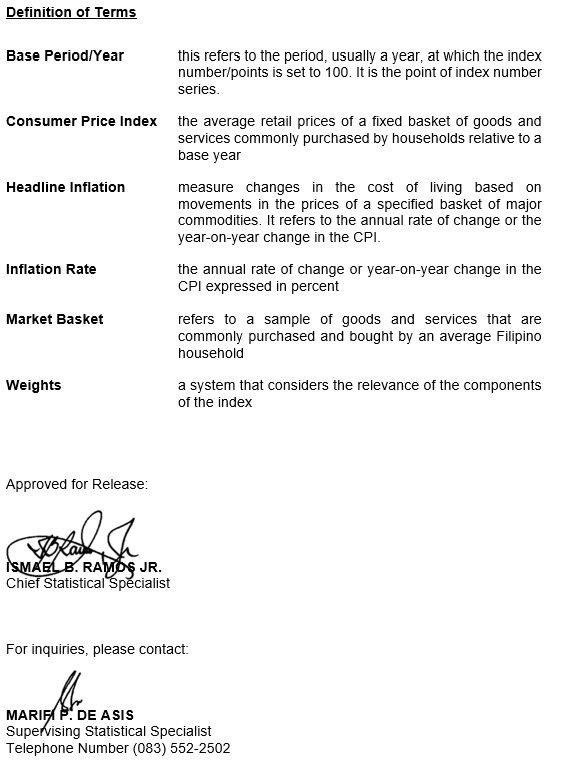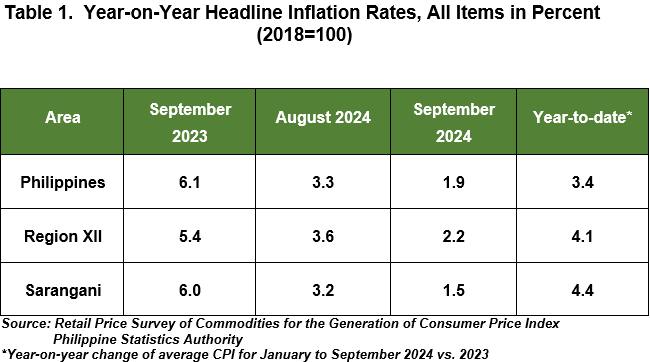
YEAR-ON-YEAR INFLATION RATES
The headline inflation in Sarangani decreased to 1.5 percent in September 2024 from 3.2 percent in August 2024. This was lower than the regional and national levels at 2.2 percent and 1.9 percent, respectively. In September 2023, the inflation rate was higher at 6.0 percent. From January to September 2024, the provincial average inflation was 4.4 percent. (Table 1 and Figure 1).
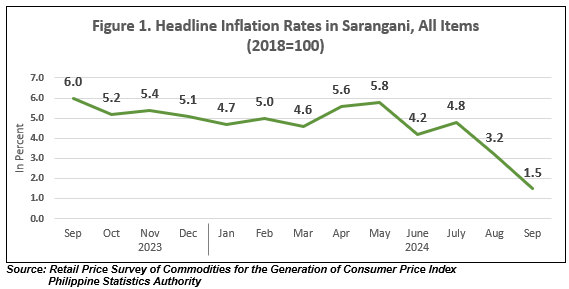
The decrease in the province’s inflation rate in September 2024 was primarily influenced by the slower annual increment of food and non-alcoholic beverages at 2.4 percent from 4.5 percent inflation in August 2024. This was followed by housing, water, electricity, gas and other fuels at 1.3 percent in September 2024 from 3.4 percent in August 2024. The index of transport also contributed to the downtrend with an inflation rate of -3.2 percent during the month from -0.4 percent in August 2024.
Additionally, the following commodity groups noted lower annual increment during the month:
a. Alcoholic beverages and tobacco, 2.7 percent from 3.0 percent; and
b. Furnishings, household equipment and routine household maintenance, 0.5 percent from 0.7 percent. (Table 2)
On the contrary, the following commodity groups registered higher annual increments during the month:
a. Health, 3.4 percent from 3.2 percent;
b. Recreation, sport and culture, 6.7 percent from 6.5 percent; and
c. Personal care, and miscellaneous goods and services, 3.7 percent from 3.1 percent. (Table 2)
The following are the commodity groups that retained their previous month’s annual rates:
a. Clothing and footwear, at 0.2 percent;
b. Information and communication, at 0.1 percent;
c. Education services, at zero percent;
d. Restaurants and accommodation services, at zero percent; and
e. Financial services, at zero percent. (Table 2)

The drop of inflation rate for food and non-alcoholic beverages was primarily due to the slower annual growth in the cereals and cereal products index at 4.5 percent in September 2024 from 11.7 percent in August 2024.
The following indices also contributed to the lower annual increment during the month:
a. Meat and other parts of slaughtered land animals, 0.6 percent from 2.0 percent;
b. Vegetables, tubers, plantains, cooking bananas and pulse, -9.7 percent from 0.9 percent;
c. Sugar, confectionery and desserts, -10.7 percent from -10.2 percent;
d. Ready-made food and other food products n.e.c., 6.6 percent from 7.4 percent;
e. Coffee and coffee substitutes, 4.1 percent from 4.3 percent;
f. Water, -0.6 percent from 0.6 percent; and
g. Other non-alcoholic beverages, 0.5 percent from 1.0 percent. (Table 3)
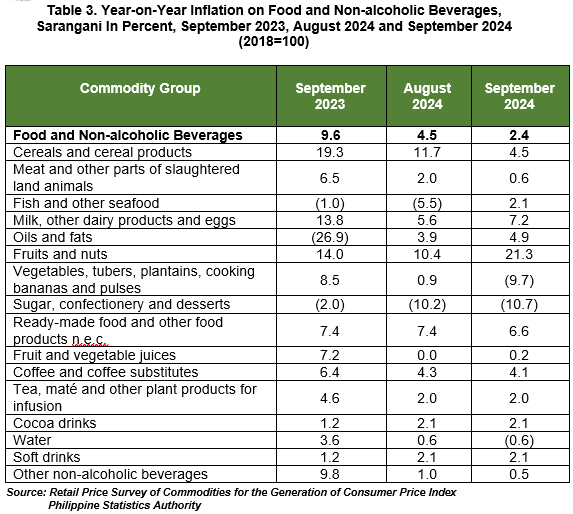
Food inflation at the provincial level slowed down to 2.4 percent in September 2024 from 4.7 percent in August 2024. In September 2023, food inflation was higher at 9.7 percent. (Table 4)
The deceleration of food inflation in September 2024 was due to the slower annual increase in cereals and cereal products with 4.5 percent from 11.7 percent in August 2024. Particularly, corn decreased from 14.4 percent to 11.7 percent in September 2024. (Table 4)
Slower annual increments were also noted in the indices of the following food groups during the month:
a. Meat and other parts of slaughtered land animals, 0.6 percent from 2.0 percent;
b. Vegetables, tubers, plantains, cooking bananas, and pulses, -9.7 percent from 0.9 percent.
c. Sugar, confectionery and desserts, -10.7 percent from -10.2 percent; and
d. Ready-made food and other food products n.e.c., 6.6 percent from 7.4 percent. (Table 4)
In contrast, higher annual growth rates during the month were recorded in the indices of the following food groups:
a. Flour, Bread and Other Bakery Products, Pasta Products, and Other Cereals, 3.4 percent from 0.6 percent;
b. Fish and other seafoods, 2.1 percent from -5.5 percent;
c. Milk, other dairy products, and eggs, 7.2 percent from 5.6 percent;
d. Oils and fats, 4.9 percent from 3.9 percent; and
e. Fruits and nuts, 21.3 percent from 10.4 percent. (Table 4)
